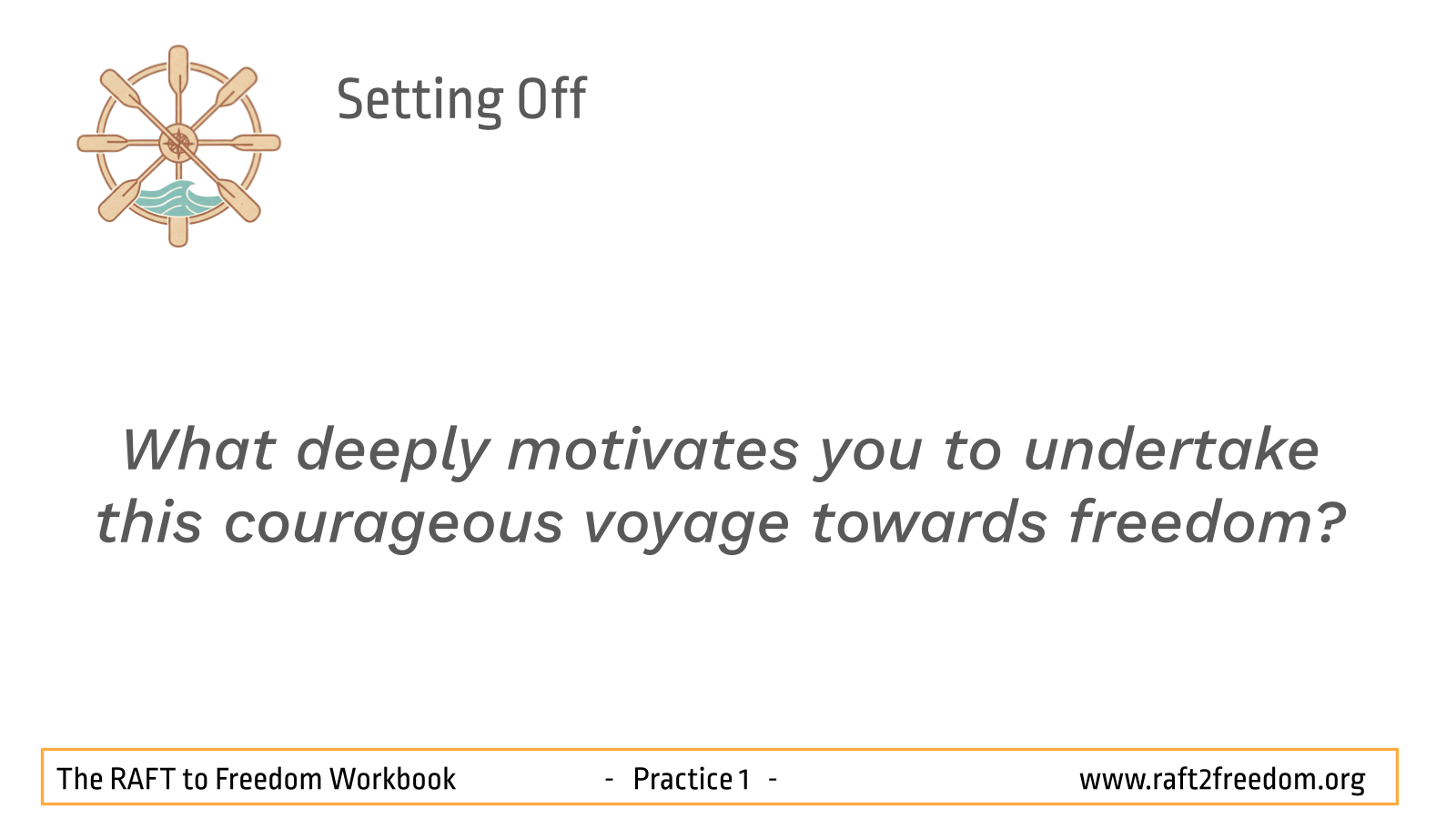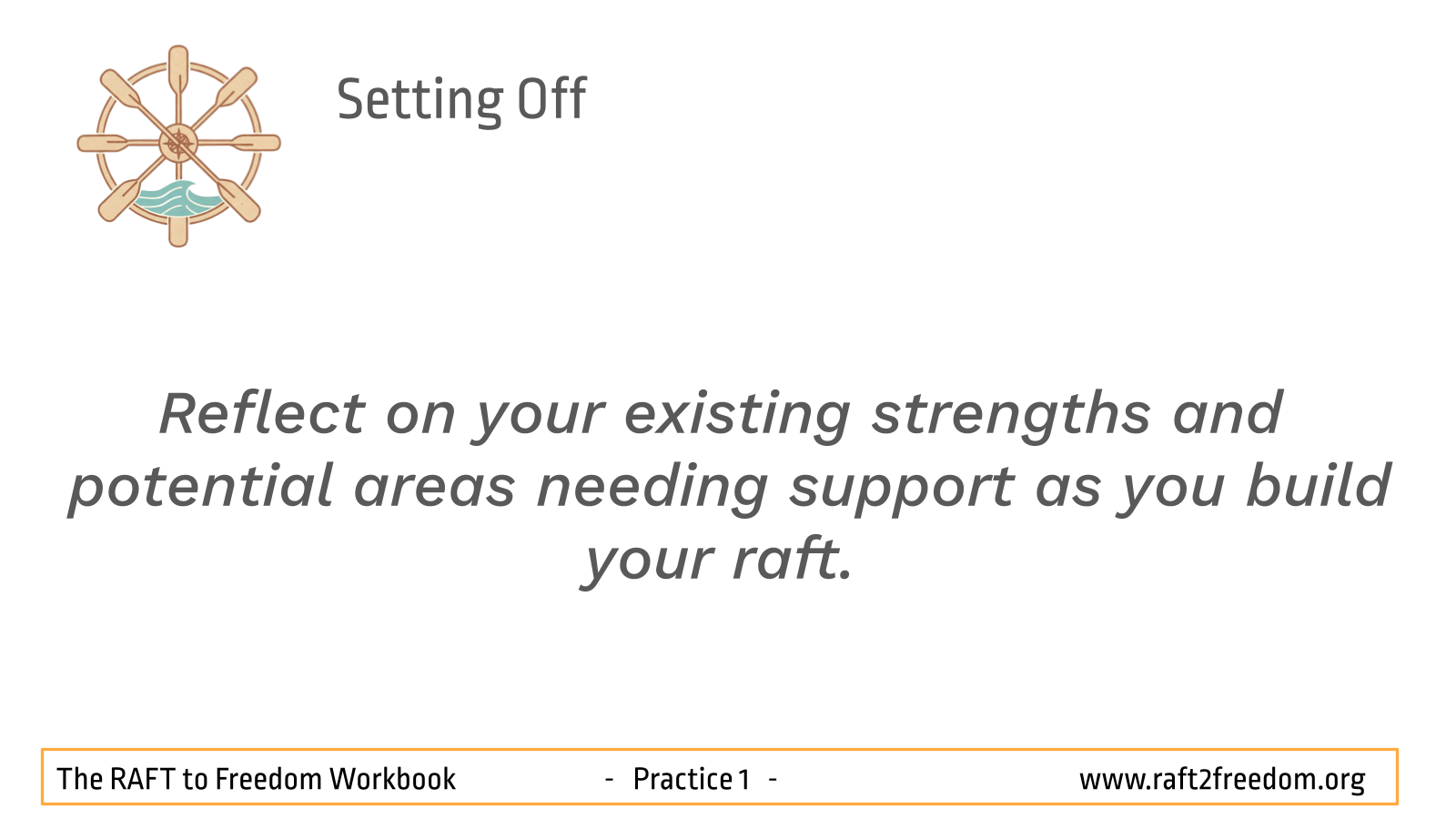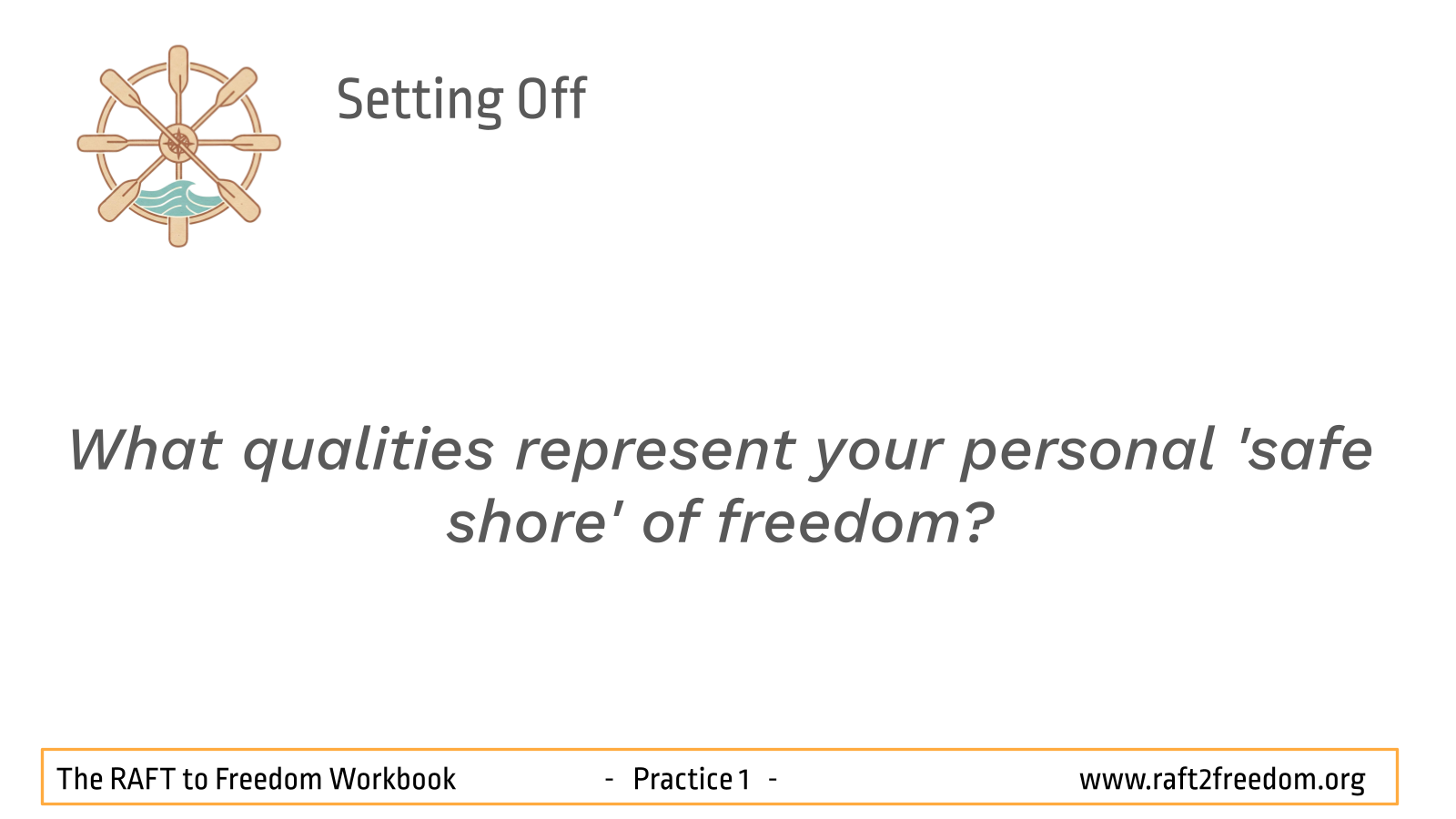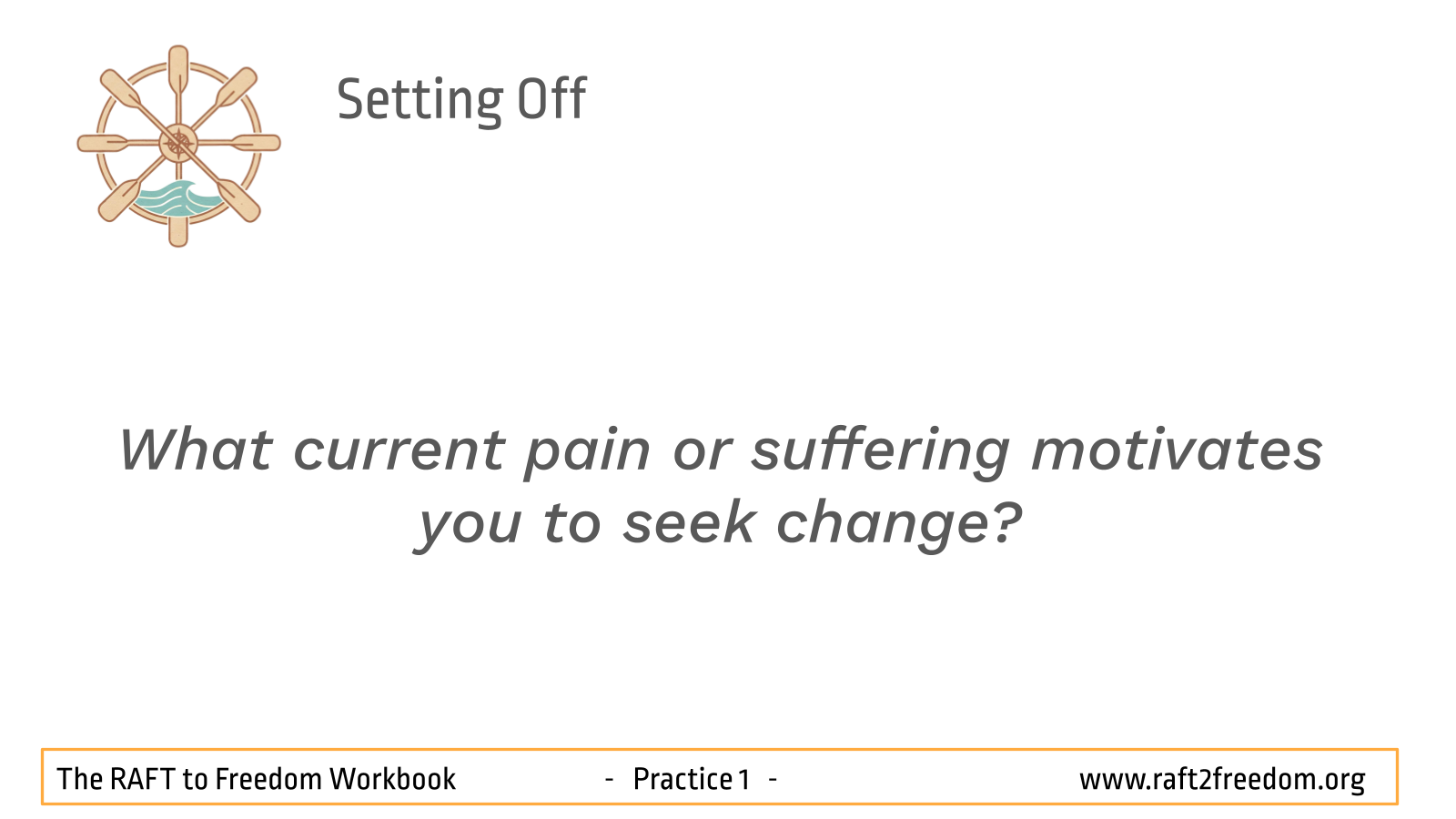Practice 1 – A map to navigate our journey:
Introducing the RAFT framework
Welcome!
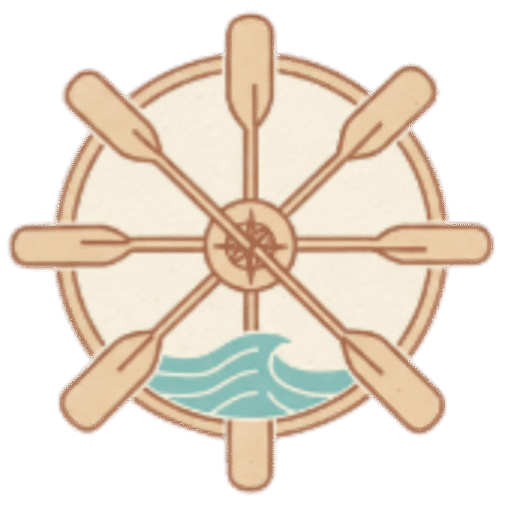
Episode 1 – A map to navigate our journey:
Introducing the RAFT framework
An AI generated ‘deep dive’ into this aspect of the RAFT to Freedom
For me, there is no happiness without freedom, and freedom is not given to us by anyone; we have to cultivate it ourselves.
Thich Nhat Hanh
The attempt to escape from pain is what creates more pain.
Dr Gabor Maté
How do we cross the waters from danger to safety? Gotama Buddha suggested that we need to build a raft – a vessel we skilfully construct using whatever materials are available to us.
RAFT to Freedom
Welcome to the RAFT
Opening this workbook and embarking on the journey towards freedom from our human struggles with craving and avoidance – our destructive patterns of escape and self-sabotage – is a profound act of courage. The RAFT to Freedom programme and workbook offer us compassionate, comprehensive guidance by blending ancient Buddhist wisdom with insights from modern neuroscience, psychology, and philosophy. Whether you seek to transform deeply ingrained patterns or simply cultivate greater peace and clarity in your daily life, this workbook is designed for you.
Participants need not identify as struggling with addiction or even as Buddhists; all that’s required is an open, caringly curious mind. After all, each of us experiences moments of craving, confusion, and reactivity – conditions Gotama (the Buddha) described as universally human.
The core aim of Gotama’s path is to overcome greed, hatred and delusion to find freedom, or to put it another way, to recover from craving, aversion and confusion.
Gotama’s four realisations
In his first discourse after awakening to life, Gotama presented four vital realisations:
- Recognise: Life is inherently painful, difficult, and disappointing. We often do not get what we want, yet frequently encounter what we don’t want. Gotama encouraged us to clearly see and deeply understand this reality.
- Abandon: Much of our pain, difficulty and disappointment stems from habitual cravings, compulsions, aversions, and preferences. Gotama urged us to abandon these destructive inclinations – not through force or suppression, but through compassionate understanding and skilful letting go.
- Freedom: Freedom from craving and compulsive patterns is possible. Gotama insisted that we can personally experience this liberation by actively cultivating moments of clarity, peace, and non–reactivity.
- Train: Gotama provided a structured programme – the Noble Eightfold Path – that integrates wisdom, ethical conduct, and mental discipline into our daily lives. Through ongoing training, we develop resilience and equanimity, steering ourselves consistently towards freedom.
The RAFT metaphor: from the dangerous shore to the safe shore
Gotama described our experience of craving and confusion as a ‘dangerous shore’, fraught with suffering and risk. Yet he also pointed toward a ‘safe shore’ of liberation – characterised by peace, clarity, and profound well-being. How do we make this crossing?
We build a raft – skillfully constructed from the materials available to us. Each of us is simultaneously captain, navigator, and crew, responsible for safely steering our raft across challenging waters.
Key components of our RAFT
- Planks (ethical foundations): Commitment to harmlessness, guided by the ‘Five Gifts’ (precepts), ensures a solid and stable foundation.
- Binding ropes (‘Heart Practices’): Compassion, kindness, joy, and equanimity, cultivated as self-compassion, self-kindness, self-appreciation, and self-balance, bind our raft firmly together.
- Masts (mindfulness and concentration): These essential qualities give our raft stability and direction.
- Sails (the four stages of our journey): Recognise, Abandon, Freedom, Train – each accomplished stage adds strength to our sails, catching wholesome winds that propel us forward.
Compass (the ‘Four Resolves’): Prevent, Abandon, Cultivate, Maintain – these compass points precisely direct our efforts towards freedom. - Engine (the ‘Four Superpowers’): Noble Desire, Courageous Effort, the Heart’s Compass, and Fearless Investigation provide motivation, energy, and intelligent navigation.
- Tools and reinforcements (the Five Defenders): Confidence, Courage, Mindfulness, A Gathered Mind, and Discernment equip us to navigate life’s storms.
- Anchors (The ‘Four Foundations of Mindfulness’): These steady us, keeping our raft secure amid turbulent waters.
Integrating mindfulness and modern recovery models
Throughout this workbook, we cultivate mindfulness practices, including mindfulness of breathing, the body, and recognising Māra – the subtle voice of craving and compulsion. We will also draw explicitly from modern therapeutic models such as Acceptance and Commitment Therapy (ACT), Dialectical Behaviour Therapy (DBT), Mindfulness-Based Cognitive Therapy (MBCT), and Mindfulness-Based Relapse Prevention (MBRP), ensuring evidence-based support for our journey.
The RAFT in action
- R – Recognise
The journey begins with honestly recognising and surrendering to the situation we find ourselves in. This involves understanding the nature of suffering – both the inherent difficulties of life and the specific suffering caused by patterns of escape and self-sabotage, and addiction. We survey the dangerous shoreline and gather the raw materials we will need for the journey ahead. - A –Abandon
Next, we learn to abandon the primary cause of our personal suffering – ‘craving’. This involves understanding how craving fuels our compulsive and reactive behaviours and how we can develop the inner strengths (the ‘Five Defenders’) and the appropriate response of the ‘Heart Qualities’ (self-compassion, self-love, self-appreciation and self-balance) needed to skilfully let go of harmful compulsions, and remove their roots. - F – Freedom
Then, we turn towards our destination, actively familiarising ourselves with the possibility and direct experience of freedom. We learn to notice, appreciate, and stabilise moments of peace, non-craving, and clarity, cultivating the Seven Navigational Tools (or Factors of Awakening) that are the signs of a mind moving towards liberation. We learn to ‘pause-linger-savour’. - T – Train
Finally, we commit to training the body, heart and mind by adopting a structured programme in the service of wellbeing. There are many such programmes (examples include: 12 Step Groups, SMART, CoDA, Recovery International), and numerous Buddhist orientated support groups (which can be explored on the Buddhist Recovery Network website), of which RAFT is one. It can be helpful for individuals to explore which of these programmes they feel most comfortable in, and will be most beneficial for them personally. In RAFT to Freedom we use early Buddhist teachings that integrate wisdom, ethical conduct, and mental discipline into our lives. This includes Gotama’s ‘Middle Way’ as the path that leads reliably to a safe shore.
How to engage with this workbook
Each chapter introduces a key concept, practical exercises, self-reflection questions, journaling prompts, and optional supporting materials from neuroscience, psychology, and philosophy. We invite you to engage actively, perhaps using a journal, and encourage you to remain honest, patient, and kind to yourself throughout the process.
We warmly encourage participation in our RAFT to Freedom community through regular online meetings and practices. Please visit raft2freedom.org for details. New participants are always welcome to join us at our zoom meetings, where each week we explore a new practice together. This is introduced in the Tuesday meeting, and participants are encouraged to reflect on and try out the practice during the week. On the next Sunday, we come together to share how the practice has impacted us – what we’ve learned, what challenged us, or how we benefited.
You could also study this workbook by yourself, but we do encourage you to meet with others, either online or in person.
Blending wisdom on an ancient path with a modern understanding
While the core framework is rooted in timeless Buddhist principles, we enhance our understanding by weaving in supportive insights from:
- Neuroscience
Understanding how addiction impacts the brain, and how practices like mindfulness promote neuroplasticity, rewiring pathways towards health. - Psychology (incl. evolutionary psychology)
Gaining insights into behaviour change, emotional regulation, trauma healing, motivation, and the roots of our drives. - Philosophy
Exploring questions of ethics, meaning, purpose, and the nature of a well-lived life.
This integrated approach aims to make the path practical, relatable, and deeply empowering.
Self-reflections
Before embarking on goal one, take a few moments to reflect quietly.
- What current pain or suffering motivates you to seek change?
- What qualities represent your personal ‘safe shore’ of freedom?
- Reflect on your existing strengths and potential areas needing support as you build your raft.
- What deeply motivates you to undertake this courageous voyage towards freedom?
Journaling prompts – charting your course
Spend some time with your journal.
- Dangerous shore: Honestly describe your struggles with craving and compulsion. Write with compassion.
- Safe shore: Clearly envision and describe the life you aspire to create.
- Inventory of resources: List internal strengths, external supports, and helpful practices already available to you.
- Setting intentions: Write your core intention for engaging fully with the RAFT programme.
Remember to remember
RAFT to Freedom provides a structured yet flexible approach, integrating ancient wisdom with modern science, guiding your personal journey from pain towards lasting freedom.
You do not have to identify with addictions and compulsions, nor be a Buddhist, to benefit from this programme. Just come as you are. Embarking on the path of liberation is a profound act of courage and self-care. RAFT as a framework offers a reliable structure, integrating ancient wisdom with a modern understanding to guide our way.
Trust in your capacity to learn, grow, and heal, patiently and persistently. The journey begins now, with the first crucial step – recognising the landscape of our shared human experience. Now let’s begin by gathering the material we need for the first stage on our journey – that of recognising what it is to be human.
And so, this spiritual life is not lived for the sake of possessions, honour, and popularity, or for accomplishment in ethics, or for accomplishment in concentration, or for knowledge and vision. Rather, the goal, the core, and final end of the spiritual life is the unshakable freedom of the heart.
Gotama
Your courageous journey begins now – welcome aboard.
Both Cathryn and Vince acknowledge with gratitude the inspiration drawn from Stephen Batchelor’s work, particularly his Cartography of Care.
Sutta references
- Alagaddupama Sutta (MN 22-The simile of the snake / raft)
This sutta provides the central metaphor for this workbook.- Summary: It teaches that the dhamma (teachings or practices) is like a raft, built for crossing the flood of suffering. Once the far shore (or liberation) is reached, one leaves the raft behind, as carrying it would be an unnecessary burden.
- Summary: It teaches that the dhamma (teachings or practices) is like a raft, built for crossing the flood of suffering. Once the far shore (or liberation) is reached, one leaves the raft behind, as carrying it would be an unnecessary burden.
- Please note that ideas and concepts may evolve over time as the project develops.
- Dhammacakkappavattana Sutta (SN 56.11-Setting the wheel of the dhamma in motion
The Buddha’s first discourse, in which he sets out the four great tasks and the eightfold path that underpin the structure of RAFT.- Summary: It introduces the middle way, defines suffering (dukkha), its origin (samudāya-craving), its cessation (nirodha), and the path (magga-the eightfold path), outlining the task associated with each truth.
| RAFT to Freedom © 2025 by Dr Cathryn Jacob and Vince Cullen is licensed under CC BY-NC-SA 4.0. To view a copy of this license, visit https://creativecommons.org/licenses/by-nc-sa/4.0/ |
